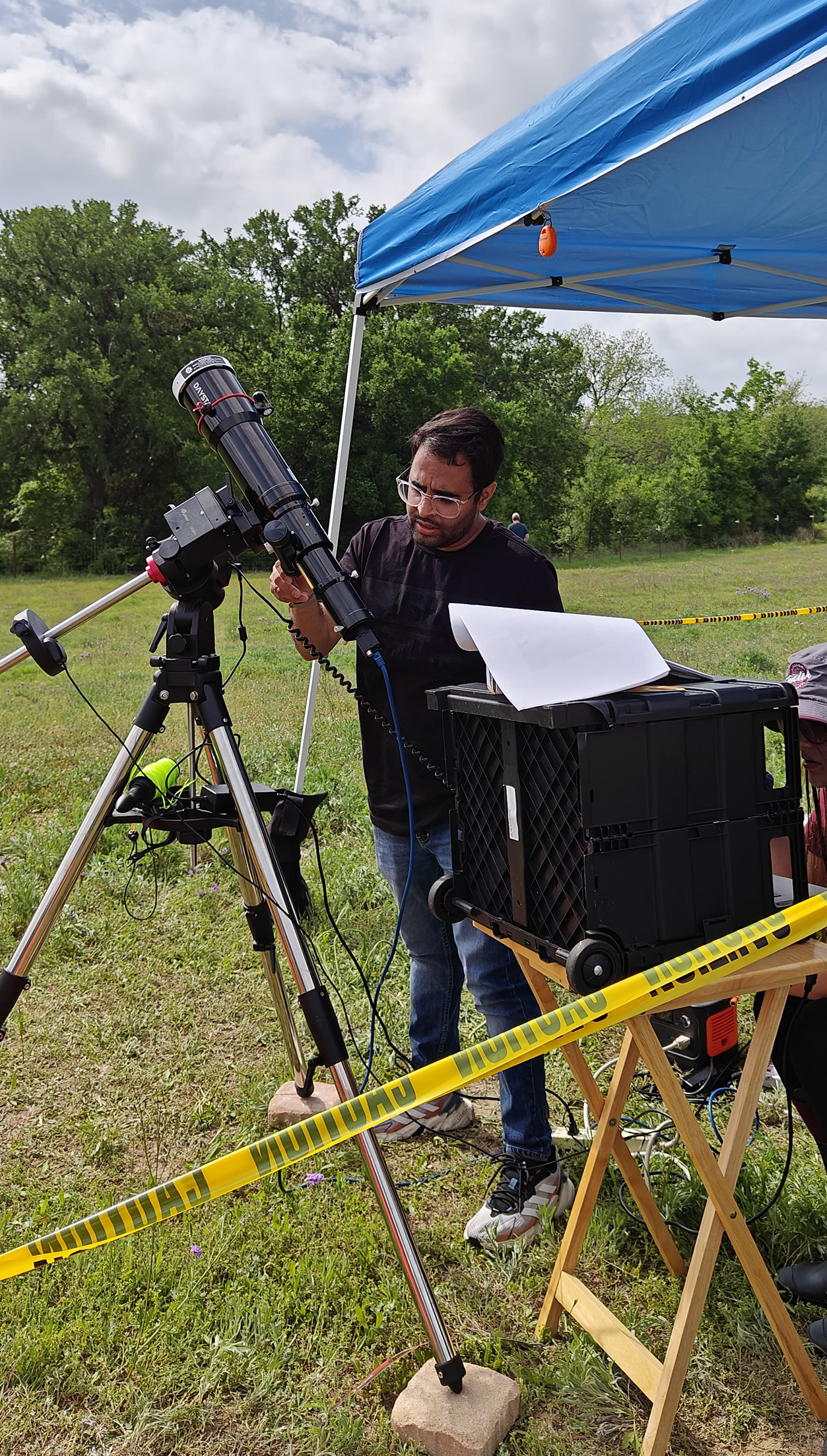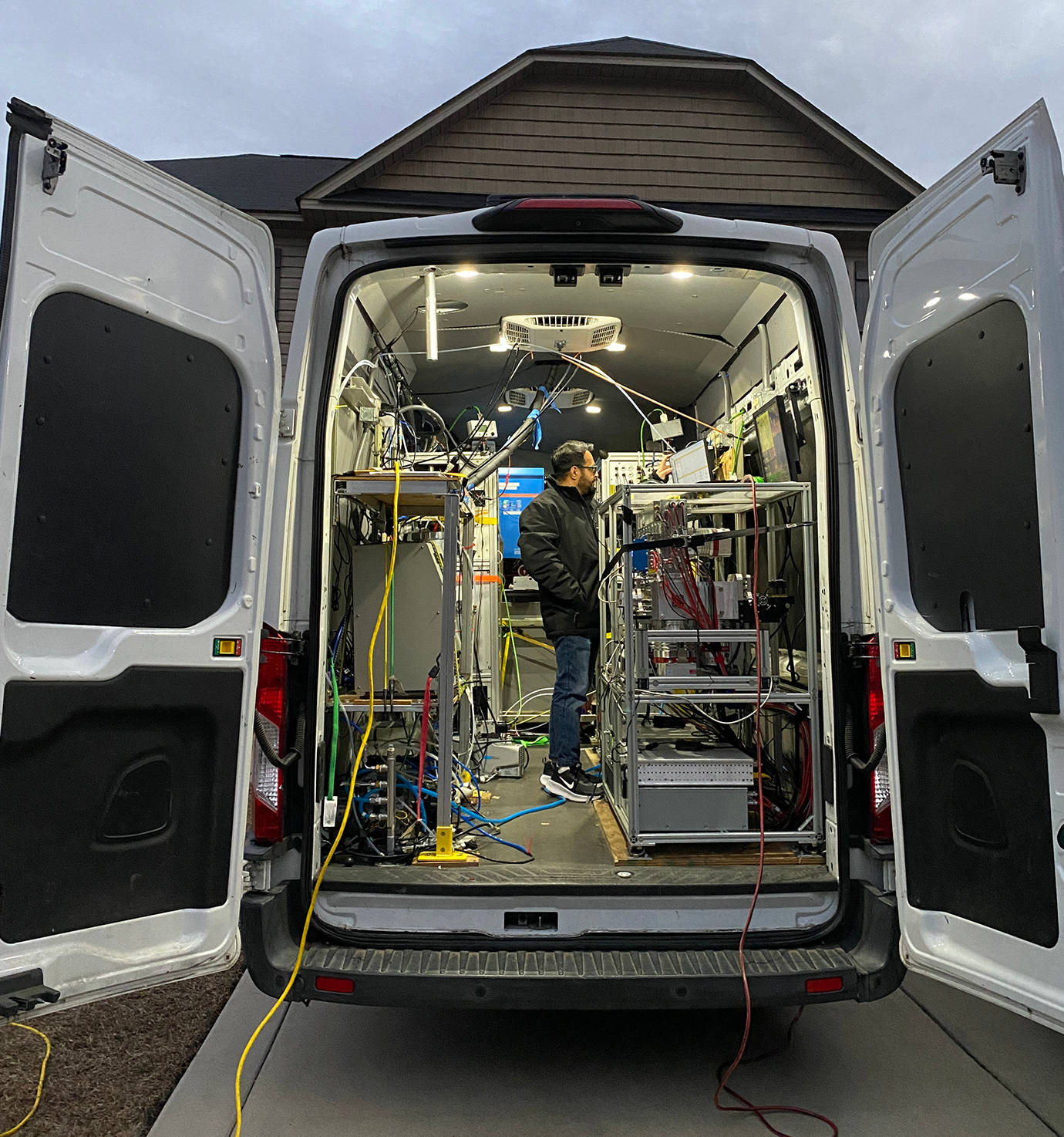
Understanding how pollutants behave in the atmosphere is key to addressing environmental challenges, and Texas A&M graduate student Sahir Gagan is at the forefront of this effort. A doctoral student in the Department of Atmospheric Sciences, Gagan is investigating how harmful substances like nanoplastics and per- and polyfluoroalkyl substances, or PFAS, evolve in the air. In simple terms, he studies how tiny plastic particles and manufactured chemicals change as they move through the atmosphere and what effects they might have on the environment and human health.
Gagan, originally from India, began his journey to Texas A&M in 2021 while searching for doctoral programs. He was drawn to the research of Yue Zhang, an assistant professor in the Atmospheric Sciences Department, whose work in pollutant analysis and environmental impacts closely aligned with Gagan’s interests in atmospheric science. Seeing an opportunity to contribute to innovative research, he applied and soon joined Zhang’s lab, officially arriving in Aggieland in 2022.
“I feel very fortunate to be part of such an esteemed institution and Dr. Yue Zhang’s team,” Gagan said.

His research focuses on using advanced mass spectrometry to analyze pollutants—using sophisticated tools to measure harmful substances in the air—and assess their impact on the environment, or how these pollutants affect the planet. Throughout his doctoral studies, he has gained expertise in atmospheric science, laboratory techniques and leadership.
“Sahir is not only an outstanding researcher but also a supportive and compassionate student who actively helps his peers and fosters connections both within and beyond the lab. It has been an absolute pleasure to have him as part of my team,” Zhang said.
Gagan has led lab experiments, coordinated a field campaign in North Carolina, and earned several honors, including the Texas A&M Atmospheric Sciences Graduate Student Exchange Fellowship, which fosters collaboration with other leading institutions. He also received the Thomas Powell ’62 Endowed Graduate Fellowship, a recognition that holds special significance for him.
“The Thomas Powell ’62 Endowed Graduate Fellowship was an important milestone in my academic journey at Texas A&M,” Gagan said. “I felt not only honored to receive such an esteemed fellowship, but it also acted as a source of validation and motivation for my work in the field of atmospheric sciences. The recognition was a source of encouragement to keep working and contributing to the field.”
Gagan also contributed to the Citizen CATE 2024 project, a study of the total solar eclipse in April 2024. Funded by the National Science Foundation (NSF) and NASA, the initiative involved setting up 35 identical telescopes along the path of totality. Working alongside community scientists, the project gathered observations during the eclipse.

Beyond research, Gagan is committed to strengthening the scientific community. As president of Texas A&M’s American Association for Aerosol Research student chapter, he connects students with opportunities in aerosol science. His background in chemistry has made courses like atmospheric chemistry and aerosol physics especially meaningful, helping him bridge the gap between theory and practical atmospheric processes.
“These classes helped me connect my chemistry knowledge to real-world atmospheric processes,” Gagan said.
Gagan’s work is already making an impact. He authored a review paper on organic synthesis in atmospheric chemistry and is the lead author of a study under review with Environmental Science & Technology that explores how nanoplastics interact with the atmosphere (NSF Grant No. AGS-2131369). He also leads a project funded by the Environmental Protection Agency (EPA) to develop real-time detection methods for PFAS compounds (EPA Grant No. R840431).
Looking ahead, Gagan hopes to continue his research in academia or industry.
“I want my work to contribute to a better understanding of the atmosphere and solutions for a more sustainable future,” he said.
